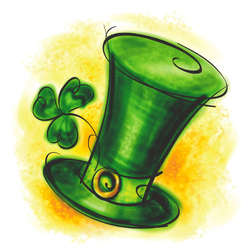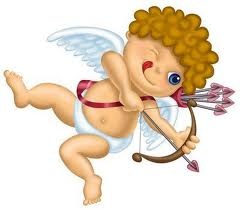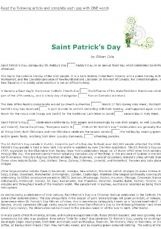Watch the last video up to min 2.55 and say whether the following statements are true (T) or false (F):
1. She dislikes Pride and Prejudice. 2. She has just finished reading Persuasion. 3. She prefers the heroine in Persuasion. 4. She has read all of Jane Austen's novels. 5. The Shadow of the Wind is set in 1945 6. It is the story of a boy who buys a book. 7. She likes the style of the book. 8. The book gives a great description of Barcelona. Answer Key (select the area to see them): 1F, 2F, 3T, 4T, 5T, 6F, 7T, 8T. If I had to choose one single favourite book to recommend, I wouldn't be able to go just for one. There are many I love and really enjoyed reading. Apart from Spanish, English, French, Italian, Greek and Latin classics, I was really hooked on The Pillars of the Earth, Angels and Demons, A Thousand Splendid Suns, The Shadow of the Wind (La sombra del viento), The Thirteenth Tale, Rainwater, The Eight, Cathedral of the Sea (La Catedral del Mar), The Doctor, The Kite Runner, The Time in Between (El tiempo entre costuras), The Rose Labyrinth, Think of a Number, The Library of the Dead, and so on. It's now your turn to share your favourite books with the class. Here you are some background information about Saint Paddy's Day.  The patron saint of Ireland and the Irish is St. Patrick who was born about 385 A.D. in Northern Wales. He studied religion in Europe to become a priest and bishop. He then brought Christianity to the Irish by teaching in Ireland for 29 years. According to early Irish tradition, he died on March 17, 461 AD. The anniversary of his death is celebrated as Saint Patrick's Day. St. Patrick is most known around the world as driving all the snakes out of Ireland through trickery. An Irish tale tells of how Patrick used the three-leafed shamrock to explain the Holy Trinity. He used it in his sermons to represent how the Father, the Son, and the Holy Spirit could all exist as separate elements of the same entity. His followers adopted the custom of wearing a shamrock on his feast day. Green is associated with Saint Patrick's Day because it is the color of spring, Ireland, and the shamrock. However, this article from National Geographic points out that not all traditions - including wearing green - are observed in Ireland. The mythical miniature man, known as leprechaun, is one of the most well-recognized symbols of Ireland and actually has quite a storied history, according to The Times. "A leprechaun is a diminutive fairy, a supernatural creature about whom tales were passed down within the rich history of Irish oral storytelling. Many European countries have fairy lore, but according to A Treasury of Irish Folklore, the Emerald Isle is unique because “the fairy powers in Ireland have been endowed with names and personalities – they are not a nameless commonality.” Irish folklore described leprechauns as crotchety, solitary, yet mischievous creatures. They were said to be shoemakers who socked away their profits in pots at the end of rainbows, or scattered them around in mountains, forests, or rocks." Read more: http://newsfeed.time.com/2012/03/17/happy-st-patricks-day-a-brief-history-of-leprechauns/#ixzz2NtU0ohgN
Finally, you may try these easy recipes:
Green Veggie/Fruit Snack: Prepare a snack using slices of fresh green vegetables. Use cabbage, cucumber, avocado, zucchini squash, green bell peppers, and lettuce. How many green fruits can your class name? Think: kiwi, honeydew melon, green apples, green grapes, papayas - bananas start out green! Shamrock Shake: Blend 1 banana, 2 cups lime sherbet, and 2 cups milk. Pot o' Gold Rainbows: Materials needed: (per student) 1 graham cracker, 1 portion blue frosting, 1 mini Reese cup, 1 pack Skittles. Directions: Students spread frosting over graham cracker and place Skittles in the shape of a rainbow. Then place the Reese cup at the end of the rainbow Baked Potatoes: bake a potato for each student and have them add garnishes such as green onion, bacon bits, sour cream, etc. Potato Pancakes: Materials needed: 1 cup all-purpose flour, 1/2 tsp. salt, 2 medium potatoes, 2 tbs. melted butter, milk (You may want to adjust the amount according to your class size.) Directions: In a large bowl, combine flour and salt. Mix in potatoes and melted butter until well blended. Add milk if necessary to obtain a soft, manageable dough. Break off egg-sized pieces, and roll each piece until it is paper-thin. Cook on a hot, ungreased griddle until brown spots appear. Try eating with some sugar and cinnamon sprinkled on top. Makes 6 pancakes. In Ireland, a potato pancake is often referred to as a "boxty." Really Easy Irish Soda Bread Recipe  Andalusia Day is a regional celebration which takes place on February 28th each year and commemorates the establishment of the autonomous region of Andalusia. In many municipalities and cities of Andalusia, people decorate their balconies with the flag of Andalusia and with bunting echoing its green-and-white bars. Cultural competitions are often held in conjunction with the day. It is also a day of celebration in schools where a traditional Andalusian breakfast is offered, consisting of a slice of toast with a thin layer of olive oil and tomato spread; students color pictures that refer to the symbols and insignia of Andalusia, its history and customs, put on plays and sing the regional anthem, the Himno de Andalucía. Our task to celebrate such an important date is to give expression to all the ways possible to express your feelings towards our region: writing a poem, uploading a video, giving your opinion, posting some fotographs, sharing your favourite recipes... up to you. Here is my contribution: Here you are your contributions: Víctor Cejudo: Paqui Soriano: Juango Lerma:  Every February 14, all around the world, candy, flowers and gifts are exchanged between loved ones, all in the name of St. Valentine. But who is this mysterious saint, and where did these traditions come from? Find out about the history of this centuries-old holiday, from ancient Roman rituals to the customs of Victorian England. The Legend of St. Valentine The history of Valentine's Day--and the story of its patron saint--is shrouded in mystery. We do know that February has long been celebrated as a month of romance, and that St. Valentine's Day, as we know it today, contains vestiges of both Christian and ancient Roman tradition. But who was Saint Valentine, and how did he become associated with this ancient rite? The Catholic Church recognizes at least three different saints named Valentine or Valentinus, all of whom were martyred. One legend contends that Valentine was a priest who served during the third century in Rome. When Emperor Claudius II decided that single men made better soldiers than those with wives and families, he outlawed marriage for young men. Valentine, realizing the injustice of the decree, defied Claudius and continued to perform marriages for young lovers in secret. When Valentine's actions were discovered, Claudius ordered that he be put to death. Other stories suggest that Valentine may have been killed for attempting to help Christians escape harsh Roman prisons, where they were often beaten and tortured. According to one legend, an imprisoned Valentine actually sent the first "valentine" greeting himself after he fell in love with a young girl--possibly his jailor's daughter--who visited him during his confinement. Before his death, it is alleged that he wrote her a letter signed "From your Valentine," an expression that is still in use today. Although the truth behind the Valentine legends is murky, the stories all emphasize his appeal as a sympathetic, heroic and--most importantly--romantic figure. By the Middle Ages, perhaps thanks to this reputation, Valentine would become one of the most popular saints in England and France. After reading the legend of such a romantic day, here you are a terrific reading exercise.
Are these statements are true or false? a. Police in America have arrested a Valentine’s Day killer. b. The man used an Internet chat room for a ‘suicide party’ on Valentine’s Day. c. The man has been charged by the police with attempted murder. d. The man was acting alone in his Internet plan. e. He was mainly targeting lonely men to take their own lives. f. Yahoo cannot help police find the visitors to the chat room. g. Police want to find a woman who wants to kill her children and herself. h. Valentine’s Day is a prime target for such plans, as many people feel lonely. Finally, here you are a wonderful love poem:
Boxing Day is traditionally the day following Christmas Day. As for its origins, several possibilities arise, none of which is definite. According to Wikipedia, the European tradition has long included giving money and other gifts to those who were needy and in service positions, has been dated to the Middle Ages, but the exact origin is unknown. It may also come from a custom in the late Roman/early Christian era, wherein metal boxes placed outside churches were used to collect special offerings tied to the Feast of Saint Stephen, which in the Western Church falls on the same day as Boxing Day. In Britain, it was a custom for tradesmen to collect "Christmas boxes" of money or presents on the first weekday after Christmas as thanks for good service throughout the year. This custom is linked to an older English tradition: Since they would have to wait on their masters on Christmas Day, the servants of the wealthy were allowed the next day to visit their families. The employers would give each servant a box to take home containing gifts and bonuses, and sometimes leftover food. And the tradition still continues today ...... The tradition of giving money to workers still continues today. It is customary for householders to give small gifts or monetary tips to regular visiting trades people (the milkman, dustman, coalman, paper boy etc.) and, in some work places, for employers to give a Christmas bonus to employees. In addition, schools across the country gather together gifts to be put in Christmas Boxes that are sent to poorer countries. Boxing Day is traditionally celebrated on 26 December, the day after Christmas Day, which is also St. Stephen's Day, a religious holiday. However, when 26 December falls on a Sunday, Boxing Day in many places is moved to 27 December. In the UK, where Boxing Day is a bank holiday, if Boxing Day falls on a Saturday, a substitute bank holiday is given on the following Monday, but if 26 December falls on a Sunday – which means that Christmas Day, another holiday, fell on a Saturday – then the Statutory Holiday for Christmas is moved.  What happens on Boxing Day in England?
Traditionally Boxing Day is a day for fox hunting. Horse riders dressed in red and white riding gear, accompanied by a number of dogs called foxhounds, chase the fox through the countryside in the hope of tiring it out. Eventually the hunters hope the fox will be so tired that the dogs will be able to catch it and kill it. Many animal welfare campaigners object to fox hunting saying it is cruel to kill a fox in this way, while many participants view it as a crucial part of rural history in England, vital for conservation, and a method of pest control. Traditionally, Boxing Day is also a family day, that is, the day when families get together. It is a day of watching sports and playing board games with the family or go on walks in the countryside. Moreover, in recent times, some shops have broken from tradition and started opening on Boxing Day to start the New Year sales. Hundreds of people now spend Boxing Day morning in queues outside shops, waiting to be the first to dive for the sales racks as the doors opened. Finally, it is unlucky to kill a wren on any day apart from Boxing Day. Hunting of the Wren on Boxing Day was once a popular activity in England. Groups of young boys know as 'Wren boys' would hunt a wren and then tie the dead bird to the top of a pole, decorated with holly sprigs and ribbons. With blackened faces, the group would sing at houses in hopes for coins, gifts or food. "The wren, the wren, the king of all birds On St Stephen's Day was caught in the furze, We hunted him far and hunted him near And found him under the bushes here. Hurrah, my boys, hurrah! Hurrah, my boys, hurrah! Knock at the knocker and ring at the bell, And give us a copper for singing so well." Those that gave money to the boys would receive a feather from the wren as thanks. The collected money was then used to host a village dance. Here are some resources to learn more about this special celebration: - BBC article + video - Elllo listening exercise - Gap-fill exercise  Find out how to make handmade Christmas cards on the links below. Some of the ideas are quite original!
Create Handmade Christmas cards 20 Days of Handmade Christmas cards (from that video you can find out more ideas on youtube) As Christmas is approaching, I'm wiritng to inform you about the activities the EOI has scheduled to fit the season on the 20th December!!! First of all, our annual Xmas Cards Contest. Below you can read all the required information about the rules and the prize!!! As for the Xmas Cooking Contest, here are the rules! To celebrate Xmas at the EOI, we're giving you the chance to win a prize too! Simply cook or bake a delicious Xmas recipe, either salty or sweet, and show it off to the EOI world! Describe in English the instructions you have followed to make the recipe. The best salty recipe and the best sweet recipe will win a prize. It's time to show off, chefs! Finally, the Xmas Party itself!!! We are going to listen to some musicians and some students reading some Christmas poems. And we are going to sing Xmas Carols, of course!!!! We'll have a Xmas karaoke!!! Needless to say that we are going to celebrate the best Xmas Card and the best Xmas dishes as well!!! Feel free to come and join the party!!!
|








 RSS Feed
RSS Feed
